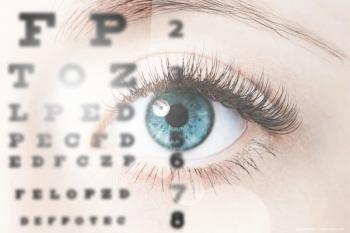
Editor's Blog: Can ophthalmology find technological 'global harmony'?
In today's blog from ESCRS, Mark Dlugoss, Ophthalmology Times editor-in-chief, discusses ophthalmic technologies and FDA-related availability issues.
Mark L. Dlugoss, editor-in-chief of Ophthalmology Times (OT), is attending the 2012 congress of the European Society of Cataract and Refractive Surgeons (ESCRS) in Milan, Italy. As part of OT’s coverage of the meeting, Dlugoss will provide a daily blog offering his observations during the meeting.
For live coverage of ESCRS, follow
Did you miss the first three editor’s blogs from ESCRS? Check them out:
The excitement of this and any ESCRS meeting has always been the introductions and launches of new products and technologies. Ophthalmologists have been and will always be intrigued with new technology. And this meeting definitely has had its fair number of additions to the ophthalmic market.
In conversations with physicians, especially U.S. physicians, and industry leaders, there is a common thread that surfaces regarding the latest technology introduced at the ESCRS meetings-Is this technology available in the United States? If not, when do you expect it will be?
The whole industry knows the answers to those questions, but we continue to ask them. Why? Because ophthalmologists, industry leaders, and even the ophthalmic media can't help ourselves. We have to ask. Maybe, just maybe, the answer will be different with a positive reaction.
The answer is always the same: "No, it's not available in the United States," and "We don't know when, or if, we will enter the U.S. market because of the FDA."
The FDA approval process is what it is, and no matter how one feels about the situation, it probably won't change anytime soon.
When American physicians walk into the exhibition hall at the ESCRS meeting and witness the latest ophthalmic technology out at the moment, one can almost see the look of excitement that quickly fades when he/she realizes that it will be years before this technology will be approved in the United States. Of course, in fairness to the FDA, some technology does move faster through the approval process. The femtosecond laser for cataract surgery comes to mind.
American physicians can only be envious of their worldwide colleagues. Not only because of the FDA situation, but because new technology presents new clinical options that physicians around the world can offer to their patients. The U.S. physicians can only feel disappointment that they can't provide those same options.
This is so true when it comes to IOLs. Several new lenses were introduced at this ESCRS meeting. These new lens additions offer ophthalmic physicians in countries that recognize the CE mark with more lens options when treating myopia, presbyopia, and astigmatism. The U.S. physicians can only rely on a handful of lenses to address the eye conditions.
For the companies that manufacture the new technologies, there is frustration as well. They would like to provide more options for all physicians worldwide-especially when "global" marketing is the business model.
How "global" can a company be without the United States? However, there are a few firms in the ophthalmic space that have demonstrated that they can be pretty global, do well financially, and not market in the United States. It can work!
One physician, who is licensed to practice in Europe and the United States, told Ophthalmology Times that he comes to the ESCRS meeting every year to check out the new technology. It's a highlight for him.
However, he said he leaves the meeting with mixed emotions. For his European patients, he can provide quality clinical care and provide them with surgical and pharmaceutical options to improve their vision problems.
When he returns to the United States and comes upon patients with similar eye conditions, he has only limited options, and the frustration becomes apparent when he knows that if a patient were living in Europe, he would have a better clinical solution.
Hopefully, some day there will be "global" harmony for all physicians when it comes to ophthalmic technology and innovation.
For more coverage of ESCRS, follow us on Twitter (
Day 1 Blog from ESCRS -
Day 2 Blog from ESCRS -
Day 3 Blog from ESCRS -
Newsletter
Don’t miss out—get Ophthalmology Times updates on the latest clinical advancements and expert interviews, straight to your inbox.















































.png)


